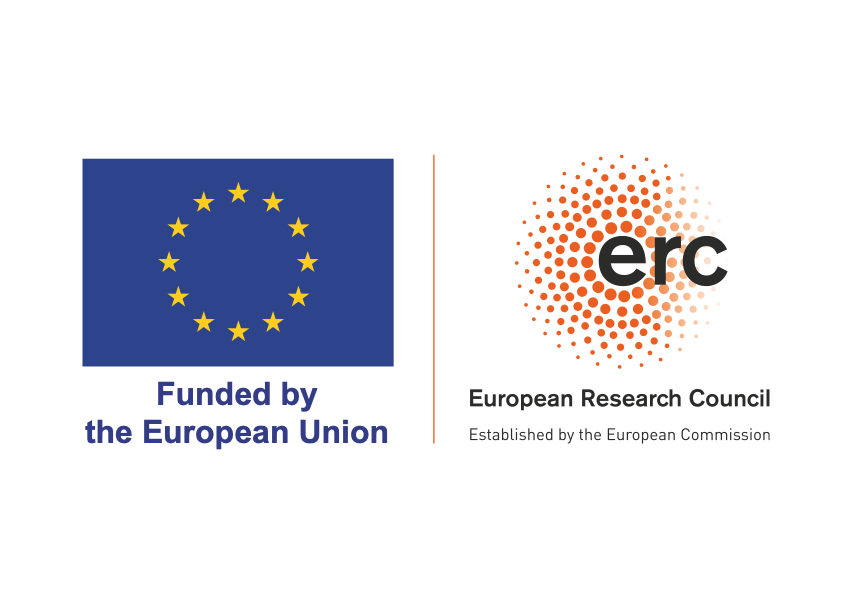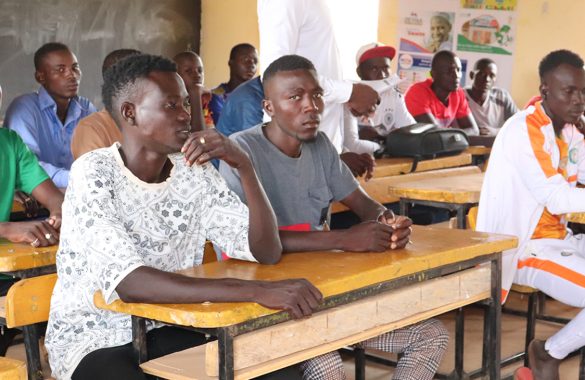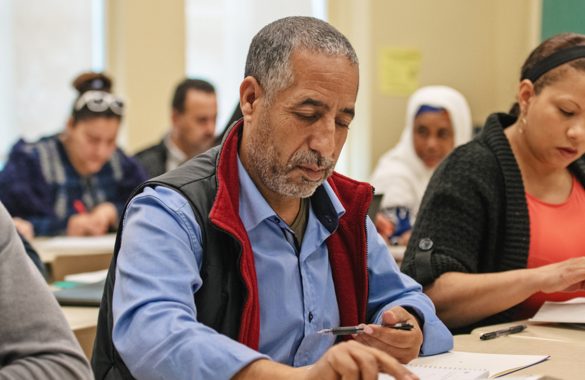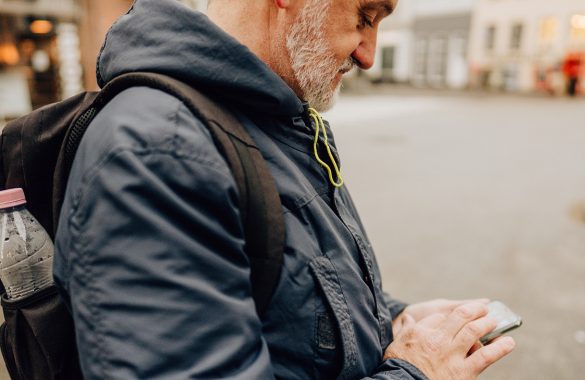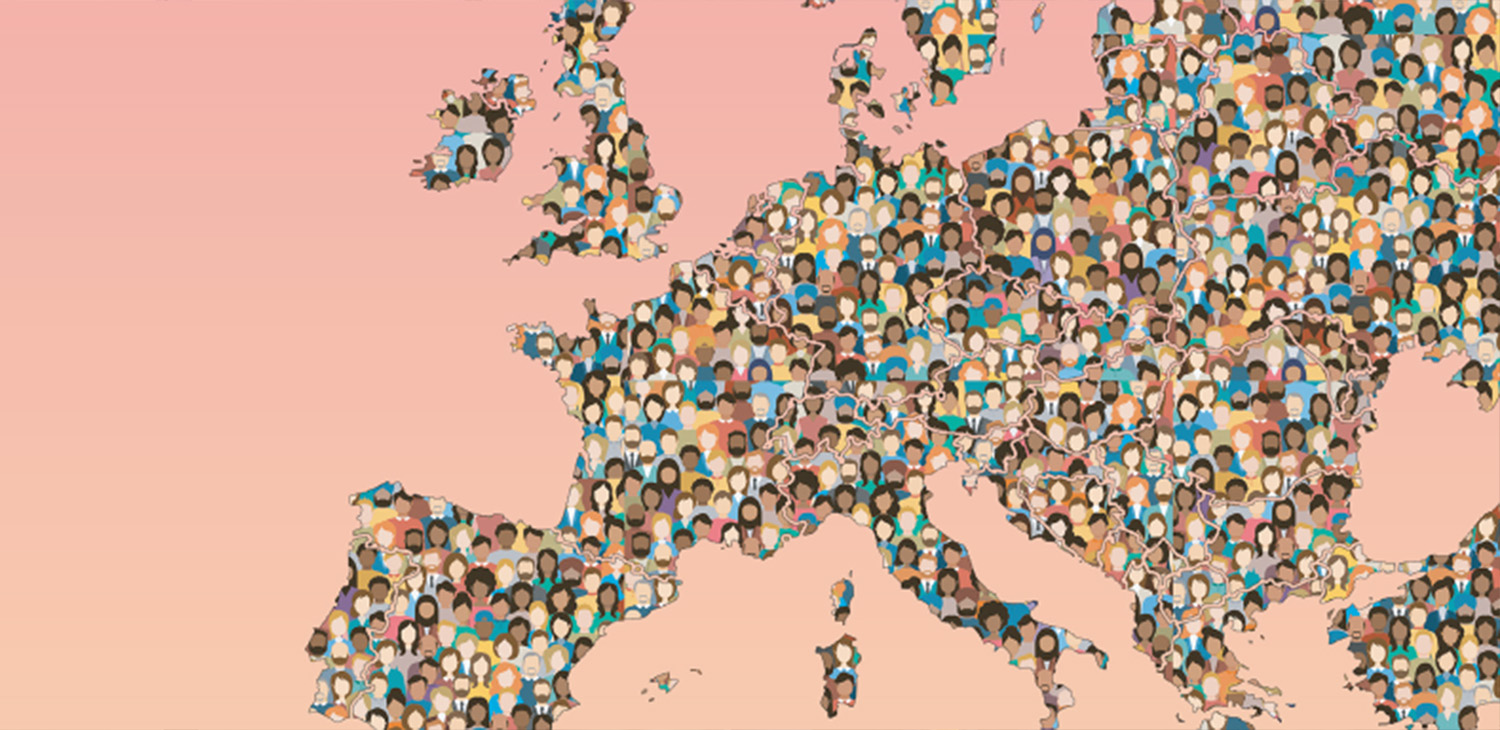
Since Russia’s invasion of Ukraine, Europe has faced its largest influx of refugees since World War II, with more than 7.4 million Ukrainians seeking asylum across the region. This comes in the wake of large arrivals of Syrian refugees in 2015–16, when Europe hosted up to 2.3 million refugees. The rise of populism across the region, anti-immigrant rhetoric from some European politicians, and the challenges associated with absorbing and integrating so many refugees suggests that these repeated humanitarian emergencies could lead to “compassion fatigue” among the European public. On the other hand, research by IPL shows that in other contexts—like Jordan, where a much greater share of refugees have landed—public solidarity for refugees endures, despite the strain they can place on services and job markets in host communities. Given the impact that public opinion can have on political and policy responses to refugees, IPL researchers set out to understand how public sentiment about asylum seekers has changed through Europe’s two major recent waves of refugee migration.
Who Does the Public Think Should Stay?
In order to compare how public attitudes have changed from one refugee influx to the next, researchers from IPL conducted two rounds of surveys six years apart in 15 European countries, spanning nations that have historically hosted the highest and the lowest number of refugees. The researchers surveyed 18,000 citizens in February 2016, in the midst of the Syrian crisis, and then conducted a second 15,000-person survey during the Ukrainian crisis from May to June 2022.
The surveys not only asked about support for asylum seekers in general, but also which asylum seekers people thought should be admitted to their countries. To tease out what kinds of profiles earn more sympathy, survey respondents were given descriptions of hypothetical asylum seekers with randomly assigned background characteristics, including gender, profession, religion, country of origin, reasons for fleeing, and special vulnerabilities—such as being a victim of torture or having no surviving family members. They were then asked to evaluate each profile and express whether they would support allowing that asylum seeker to stay in the country.
Ukrainians received a warm welcome—largely because they fit the profile of a “desirable” refugee
Attitudes toward Ukrainian asylum seekers in 2022 were especially positive compared to asylum seekers from other countries, a bias that has also been voiced by politicians and public officials in the region. What was behind this preference? The analysis found that it was primarily driven by the public favoring specific traits that Ukrainian asylum seekers were more likely to possess. Respondents were more likely to support admitting asylum seekers who were younger, female, Christian, had no inconsistencies in their asylum testimony, possessed higher occupational and language skills, and who had special vulnerabilities. The idea of “deservingness” was also at play; respondents were less supportive of asylum seekers migrating for economic reasons rather than fleeing persecution or war. These traits are especially common among those fleeing Ukraine. With the Ukrainian government mandating military conscription for men, an estimated 90% of refugees from Ukraine are women and children. Paired with the country’s majority Christian population, relatively high education levels, and the fact that they are fleeing war, the profile of most Ukrainian refugees matches many of the general traits preferred by the public.
Another—though relatively small—part of the explanation relates to country of origin: in 2022, Europeans had a 5.5 percentage point higher probability of choosing a Ukrainian vs. non-Ukrainian asylum seeker. This was an increase from 2016, suggesting there have been some minor shifts to European preferences in the face of the war in Ukraine. Ideas about European identity also mattered: respondents who expressed greater feelings of European solidarity were more likely to support Ukrainians in particular. While this might appear to reflect a general preference for all European asylum seekers, there was no evidence of a similar preference for asylum seekers from Kosovo.
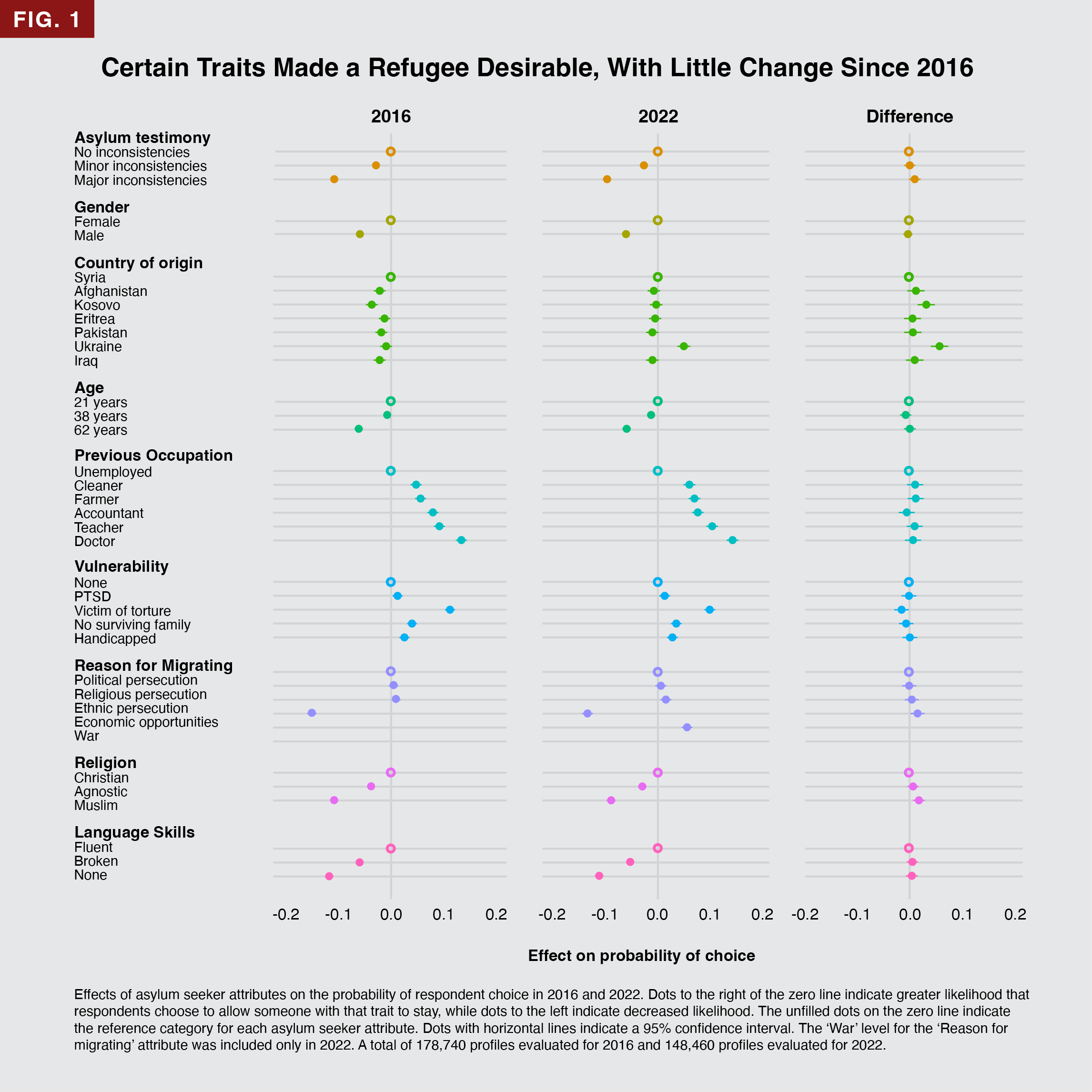
Support for refugees persists, despite a second major refugee influx
How has the large inflow of Ukrainians into Europe impacted the public’s views on asylum seekers? While some fear Europeans are growing wary of the ever-increasing number of refugees fleeing to the region, the researchers found little evidence of this in the data. Support for asylum seekers in 2022 was, if anything, slightly stronger than at the height of Syrian refugee flows into Europe. Nor was there much change in the type of refugee that the public preferred. The same traits that made an asylum seeker desirable to the European public in 2016 remained salient in 2022.
In other words, Europeans hold persistent preferences for—and biases against—certain types of asylum seekers. Yet at the same time, the study’s findings also counter fears that generosity towards one group of refugees necessarily comes at the expense of another. Between 2016 and 2022, the number of non-Ukrainian asylum seekers that respondents were willing to accept either remained the same or increased across all of the surveyed countries. This was true with respect to religion as well. While Europeans were generally less welcoming to Muslim refugees than Christians, this gap did not widen with the arrival of Ukrainian refugees. Instead, support for Muslim asylum seekers was actually higher in the majority of countries in 2022 compared to 2016.
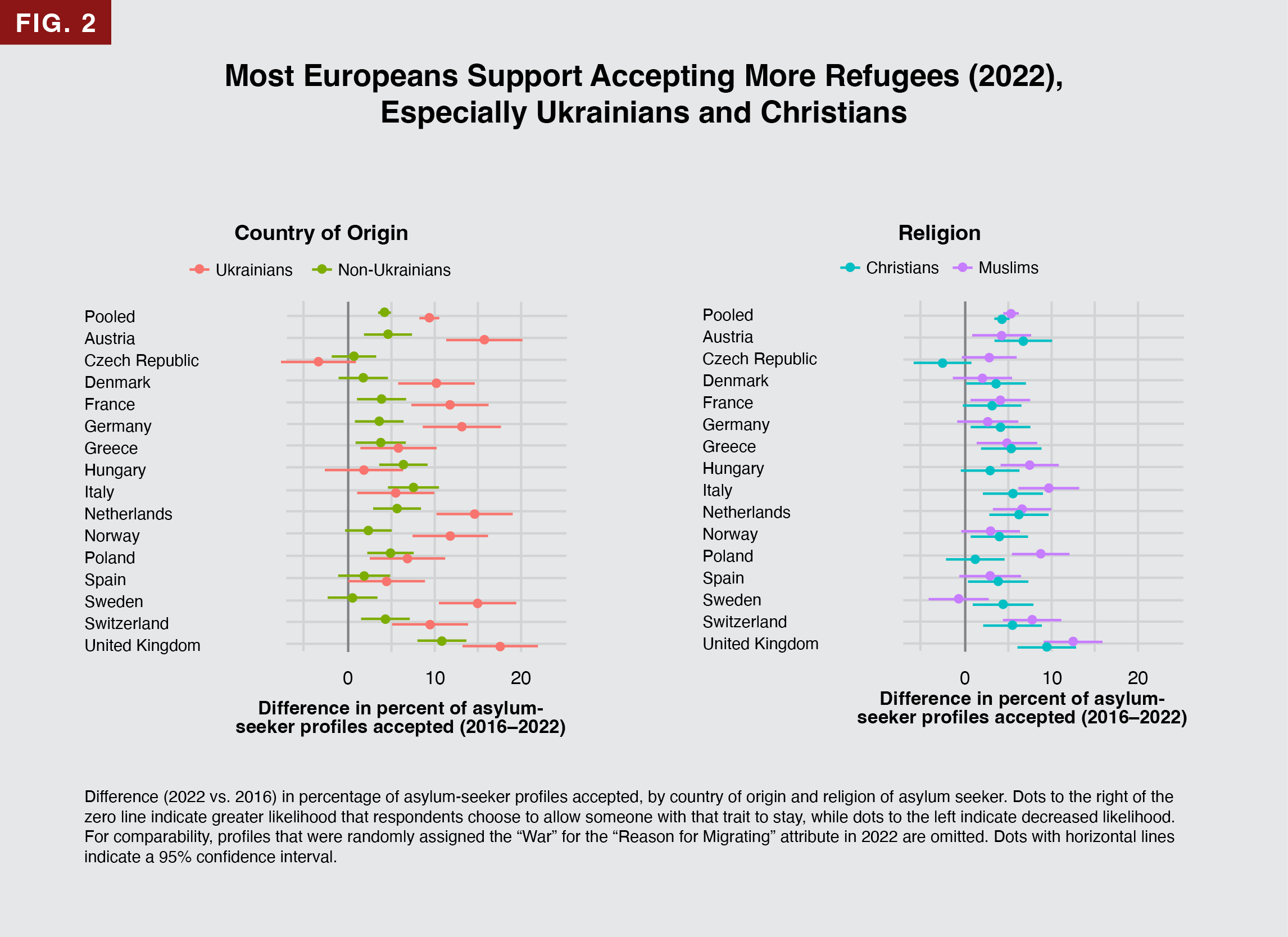
Given the rise of populism across Europe, we might also expect greater polarization in attitudes across the ideological spectrum and decreasing support for refugees among right-wing voters. While right-wing voters were in general much less likely than left-wing voters to support letting asylum seekers stay, the study found greater support in 2022 than in 2016 among both conservative and liberal respondents.
What Does This Mean For Asylum Policy?
With the European Union’s recent passage of a historic agreement to reform how it processes and relocates asylum seekers across member states, EU governments are grappling with the political, economic, and social costs and benefits of taking in more refugees. Gauging the public’s reaction to refugees over time—amid shifts in media cycles and displacement crises, and the rise and fall of vocal political factions—is particularly important for policymakers hoping to remain responsive to their constituents. The remarkable consistency with which Europeans—regardless of political affiliation or geopolitical backdrop—prefer particular asylum seekers indicates that public attitudes may be less malleable on this issue than previously thought. It may be difficult for policymakers to generate support for refugees who are considered, because of their identities and backgrounds, to be less desirable among the host public. At the same time, overall support for refugees—which extends far beyond Ukrainians—has been stable and, if anything, increased despite the occurrence of repeated humanitarian emergencies. This suggests that policymakers may be able to leverage Europeans’ generosity towards Ukrainians to continue to admit, integrate, and bolster support for refugees, and that there is little risk of compassion fatigue undermining efforts to provide protection and support to people in need.
LOCATION
Europe
RESEARCH QUESTION
How does the European public react to repeated refugee crises, particularly the current influx of Ukrainian asylum-seekers?
TEAM
Kirk Bansak
University of California, Berkeley
Jens Hainmueller
Dominik Hangartner
RESEARCH DESIGN
Repeat public opinion surveys and a survey experiment
KEY STAT
European support for asylum seekers, and their preferences for particular kinds of asylum seekers—young, female, Christian, and highly-skilled—remained remarkably stable across the Syrian (2015–16) and Ukrainian (2022) refugee crises.
Funders
European Research Council
Swiss National Science Foundation
